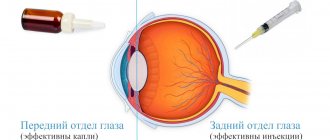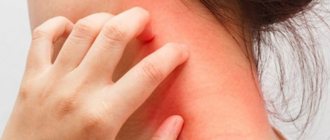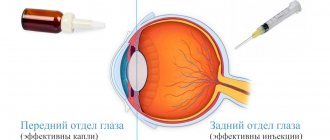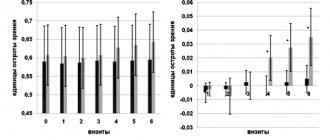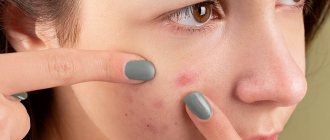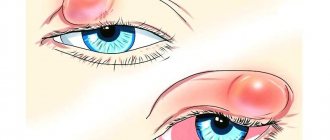Possible causes of red eyes
- Diseases of the conjunctiva:
- conjunctivitis (infectious conjunctivitis caused by bacteria, viruses, chlamydia; non-infectious conjunctivitis - allergic conjunctivitis, dry eye syndrome, toxic effects of drugs on the conjunctiva, conjunctivitis in systemic diseases);
- conjunctival tumors;
- subconjunctival hemorrhage.
2. Diseases of the cornea:
- infectious keratitis (caused by bacteria, viruses, chlamydia, fungi, protozoa);
- non-infectious keratitis (paralytic, associated with non-closure of the palpebral fissure, with systemic diseases, with allergic diseases);
- keratopathy;
- syndrome of recurrent epithelial defects.
3. Uveal diseases:
- anterior uveitis (inflammation of the iris and/or ciliary body);
- bacterial endophthalmitis.
4. Attack of angle-closure glaucoma.
5. Injuries to the eyeball (eyelids, orbits, conjunctiva, cornea, sclera).
6. Diseases of the eyelids:
- abnormal eyelash growth;
- eversion of eyelids;
- inflammation of the edges of the eyelids - blepharitis;
- barley.
7. Diseases of the sclera:
- episcleritis;
- scleritis
8. Orbital diseases:
- thyroid orbitopathy;
- inflammatory diseases;
- orbital tumors;
9. Cluster headaches.
The sudden appearance of redness indicates the beginning of a painful process. The following symptoms accompanying eye redness require urgent intervention:
- sensitivity to light - photophobia;
- the appearance of rainbow circles around the lamps;
- sudden appearance of double vision;
- accompanying severe headache.
What to do if your eyes turn red?
It all depends on the cause of redness of the protein membrane. If this symptom is associated with fatigue, you just need to give your eyes a rest. It is advisable to establish a sleep schedule (rest at least 8 hours a day) and spend as little time at the computer as possible. If this is difficult, then it is necessary to reduce visual stress with the help of special eye exercises, and also systematically take a 10-15 minute break. For redness of the sclera, which is caused by insomnia, it is recommended to apply cooled black tea bags to your closed eyes for 10-15 minutes. This compress will help relieve some of the discomfort.
To prevent eye redness when wearing lenses, it is advisable to always have moisturizing drops on hand. They will help eliminate discomfort when staying in rooms with excessively dry air.
It is also necessary to follow the rules for caring for ophthalmic products, adhere to their wearing regimen and replacement schedule. If necessary, replace the multifunctional solution with a lens care product with a more gentle composition (for people with highly sensitive eyes).
If redness is caused by the appearance of inflammatory reactions (conjunctivitis, blepharitis), self-medication is strictly prohibited. Only an experienced specialist can determine the cause of the disease and determine how to treat it. It should be noted that the main way to prevent eye redness during inflammatory processes is to follow the rules of hygiene. Frequent hand washing will reduce the chances of introducing harmful microorganisms into the eye cavity.
In general, timely rest and strengthening the immune system are also extremely important for preventing the occurrence of this problem. Remember, if a symptom appears systematically, you should consult a doctor as soon as possible.
On the Ochkov.Net website you can profitably order contact correction products from world brands in just a few clicks. We guarantee you ease of ordering and fast delivery throughout Russia.
Types of redness:
- Superficial - the greatest intensity of redness is visible in the peripheral part of the conjunctival sac; this type of redness indicates dilation of the conjunctival vessels, external inflammation; usually requires consultation with a doctor.
- Deep (pericorneal) - a blue-red border around the cornea, this means that the vessels in the sclera are dilated, inflammation inside the eye; appears in diseases of the cornea and iris; Urgent consultation with a doctor is required.
- Mixed - there is dilation of the vessels of the conjunctiva and sclera around the cornea; immediate contact with an ophthalmologist is required.
It is worth considering whether any of the symptoms predominate:
- discomfort and discharge from the eye - most often indicate an infection;
- itchy skin - indicates the most common allergic diseases;
- increased burning sensation during the day - most often this indicates dry eye syndrome;
- redness, swelling of the eyelids - this most often indicates inflammation of the eyelids.
A combination of symptoms can help determine the cause and provide effective treatment.
Types of red eye syndrome
Depending on the location of the redness, there are several types of red eye:
- Conjunctival type
- redness along the arches of the conjunctiva. - Pericorneal type
- redness around the limbus (the junction of the cornea and sclera of the eye). - Mixed type
- a combination of conjunctival and pericorneal types.
People need urgent assistance on the same day:
- after mechanical injuries (foreign body, blow, abrasion);
- for chemical burns of the eyes;
- with a significant, sudden deterioration in vision (it should be checked by covering each eye separately);
- with the appearance of rainbow circles around the lamps in a very painful eye, accompanied by headache and deterioration of visual acuity (usually this means an acute attack of angle-closure glaucoma); when comparing the density of the eyeballs through the eyelids, it is discovered that the patient’s eye is “hard as a rock”);
- with the sudden appearance of double vision;
- with the sudden appearance of exophthalmos;
- with pericorneal or mixed redness;
- for redness and infection of the eye in patients wearing contact lenses.
Tear substitute drops - salvation from ophthalmic diseases?
Some redness in the whites of the eye is completely normal. Therefore, there is no need to immediately panic and grab the drops, which, according to the protein, will prevent blood stains.
Despite the fact that there are a lot of artificial tears, and they have different compositions, the effect of eye drops lasts literally for a couple of hours. Over time, addiction may develop and you will need to use the drops more and more every day.
The chemical components present in their composition begin to irritate the mucous membrane, which can lead to unpleasant consequences. In addition, tear drops only eliminate the symptoms, but do not in any way affect the causes of redness. Therefore, doctors recommend using them as an emergency measure and only in extreme cases.
Consultation with a specialist within 1-2 days from the onset of symptoms is required for people:
- with superficial redness of the conjunctiva;
- with conjunctivitis, such as common infections, allergic conjunctivitis, or dry eye redness;
- for diseases of the eyelids;
- with episcleritis, scleritis.
A condition that can be treated with over-the-counter medications is subconjunctival hemorrhage. It appears as a bright red color and raised conjunctiva. It is not associated with other symptoms (eg, blurred vision, discharge from the eyes). Blood may appear spontaneously under the conjunctiva (for example, in patients with atherosclerosis during surges in blood pressure) or even after minor trauma, such as rubbing the eye.
For the patient, this is a clinically insignificant phenomenon that does not pose a threat (subject to examination of the retinal vessels by an ophthalmologist). The process of resorption of blood from under the conjunctiva takes several weeks. It is advisable to normalize and control blood pressure with a therapist and use drugs that strengthen the vascular wall (for example, rutin derivatives).
When instilling into the eyes, remember that in case of hypersensitivity, the conjunctiva may turn red, especially when using drops with preservatives. Redness may also be due to the effects of eye drops that patients use to “whiten” the eyeball (vasoconstrictors; their use too often leads to permanent redness of the eyes), as well as to the effects of certain glaucoma medications (prostaglandin analogues).
Why do my eyes turn red after using contact lenses?
Many people with refractive errors (farsightedness, myopia, etc.) prefer contact lenses. These optical products provide high quality not only central, but also lateral vision, which allows for the widest possible viewing angle. In addition, they do not restrict freedom of movement and do not compress the bridge of the nose, unlike glasses.
Patients often wonder why their eyes turn red in the evening when using lenses. This may be due to several factors. One of them is non-compliance with wearing optical products.
For example, continuous use of colored lenses for more than 4-5 hours causes oxygen starvation of the cornea. If you sleep with lenses worn during the day, you will experience dryness and redness in the morning. With prolonged use of correction products in rooms with excessively hot and dry air, a change in the color of the sclera is also observed due to drying out of the cornea. To eliminate this uncomfortable phenomenon, it is necessary to additionally use moisturizing drops.
Some believe that the eyes turn red in the evening due to an allergy to contact lenses. However, this is quite rare. As a rule, it is confused with individual intolerance to the components of a multifunctional solution. In this case, the care product should be replaced. Also, an allergic reaction may occur to protein and lipid deposits that accumulate over time on the surface of optical products with a long period of use. To avoid this, it is necessary to carry out enzymatic cleaning in a timely manner using special means. It is also important to maintain a replacement schedule for optical products. After their expiration date, they must be disposed of and replaced with a new pair.
Redness of the eyes is also observed when the cornea is damaged, which is associated with violation of the rules for wearing lenses. For example, this may occur if you wear cracked optics.
In this case, as a rule, the eye becomes very red, and pain and tearing are also observed. This indicates that you need to immediately remove the lenses and seek help from an ophthalmologist.
In addition, redness occurs when the parameters of optical products are incorrectly selected (diopters, curvature, etc.). You may need contact correction products with a higher level of oxygen permeability and moisture content. Patients with hypersensitive eyes are recommended to buy daily lenses. They are the safest and easiest to use.
Reasons why the whites of the eyes turn red when wearing lenses:
- Incorrect selection of contact correction products.
- Violation of the wearing regimen or replacement schedule for optical products.
- Lack of professional and systematic care for contact lenses.
- Individual intolerance to the components included in the optical care solution.
- An allergic reaction to deposits that accumulate over time on lenses with a long period of use.
- Mechanical damage to the cornea due to violation of the rules for using optical products.
Why do blood vessels burst in a child’s eyes?
Symptoms are more common in adults. However, children are also susceptible to the disease. Most often, the causes of “bursted blood vessels” are crying or physical exertion during games.
Redness of the whites of the eyes also occurs in newborns. This may be due to difficulties passing through the birth canal and the use of drugs to induce labor.
You should not be afraid of a one-time redness of the eyes. However, if a vessel in the eye bursts frequently, do not delay visiting a doctor and receiving appropriate treatment.
The article was checked by the chief ophthalmologist at the Optics Plus eye clinic, Timofeev E.G. 04/22/2021.
Read also
Blindness
Vision is a unique gift that nature has given us.
We can truly appreciate it only when we lose. With a number of diseases, vision loss can sometimes decrease to almost complete blindness. Often... Read more
Contact lenses/contact correction
Vision is one of the senses through which we learn about the world around us. Good vision is essential for a high quality of life. The most important characteristic in diagnosis is the acuity...
More details
Partial optic atrophy (PANA)
Vision is the most important function in human life. We receive 70% of information from the world around us through vision. The optic nerve is one of the most important elements of the organ of vision. It is through...
More details
Myopia
Vision plays a huge role for a person. Through the eye we experience the entire amazing and diverse world. A person receives 80-90% of information from the surrounding world through vision. Therefore, a huge tragedy...
More details
Snoring and obstructive sleep apnea syndrome
Snoring is a rhythmic vibration of the soft tissues of the pharynx in the flow of inhaled and exhaled air. Snoring occurs against the background of a decrease in the tone of the pharyngeal muscles during sleep and the transition of breathing to the night “automatic”...
More details
What kind of drops are there?
Drops for eye redness are an ophthalmic solution, the composition of which is selected in such a way as to solve problems with blood vessels caused by specific reasons. Therefore, all funds are divided into several groups.
Gilan drops imitate natural tears
Moisturizing compositions are necessary for constant visual work, especially with high load, as well as when wearing contact lenses. As mentioned above, they imitate natural tears and moisturize the surface of the eyes, helping to get rid of burning and itching, reducing the negative impact of external factors. Moisturizing drops can be used as needed, daily, up to 5-6 times a day.
Drops that constrict blood vessels and help relieve swelling are also recommended for increased visual stress. Thanks to them, the small capillaries located in the tunica albuginea narrow, and the redness disappears, and the eye looks white again. Vasoconstrictor drops can be used no more than 1-2 times a week. Regular use of such drugs can lead to undesirable consequences, for example, disruption of the nutrition of the eye structures and increased intraocular pressure. In addition, drugs in this group are addictive.
Preparations "Systane Ultra" and "Systane Ultra Plus" allow you to quickly relieve redness
An ophthalmologist prescribes antihistamine and anti-inflammatory solutions if the cause of eye redness is an allergic reaction. They help cope with vasodilation, as well as itching and increased tearing. In severe cases of allergies, hormonal solutions help.
Often the cause of red eyes is an infection. In this case, it is necessary to use antibacterial drugs.
Artelak Splash eye drops effectively combat dry eyes
For ARVI, influenza and herpes virus, antiviral drops can be prescribed. Vitamin complexes are used to maintain eye health. These are general strengthening drugs that can be used for preventive purposes. But they won't help if your eyes are already red.
The following medications are used to combat eye redness:
- “Systein Ultra”, “Gilan” and “Artelak Splash” are drops that imitate natural tear fluid. This type of medication is prescribed in cases where redness is caused by dry eyes;
- “Okumetil” and Innoxa are drops that have a vasoconstrictor and anti-edematous effect. Recommended in cases where redness is caused by high visual stress;
- "Dexa-Gentamicin" is an antibiotic that is prescribed for infections of the anterior segment of the eye, allergies accompanied by bacterial infection, and for preventive purposes after operations on the visual organ;
- "Floxal" - antimicrobial medicinal drops that are used for infectious and inflammatory diseases of the eye.
Any medications should be used only as prescribed by a specialist. Self-medication can only worsen existing problems!
conclusions
Self-treatment of red eyes is only permissible if there are no associated symptoms. Redness may appear against the background of a sharp change in temperature (for example, when visiting a bathhouse), under the influence of tobacco smoke or wind, or when dust gets into the eyes. The eyes turn red due to increased body temperature and allergic reactions of the body, from lack of sleep.
In all these cases, no special treatment is required; you can try to remove the redness using the gentle folk methods listed above and special eye drops. However, it is important to monitor the dynamics of redness and consult a doctor if the redness does not go away for a long time or becomes more intense.
If redness is accompanied by itching, swelling, pain and burning, discharge, lacrimation and other associated symptoms, you need to visit an ophthalmologist as quickly as possible!
In order to prevent redness of vision, it is necessary to carefully monitor eye hygiene, use only high-quality cosmetics, ensure proper and long sleep, and also follow all the rules for using contact lenses.
